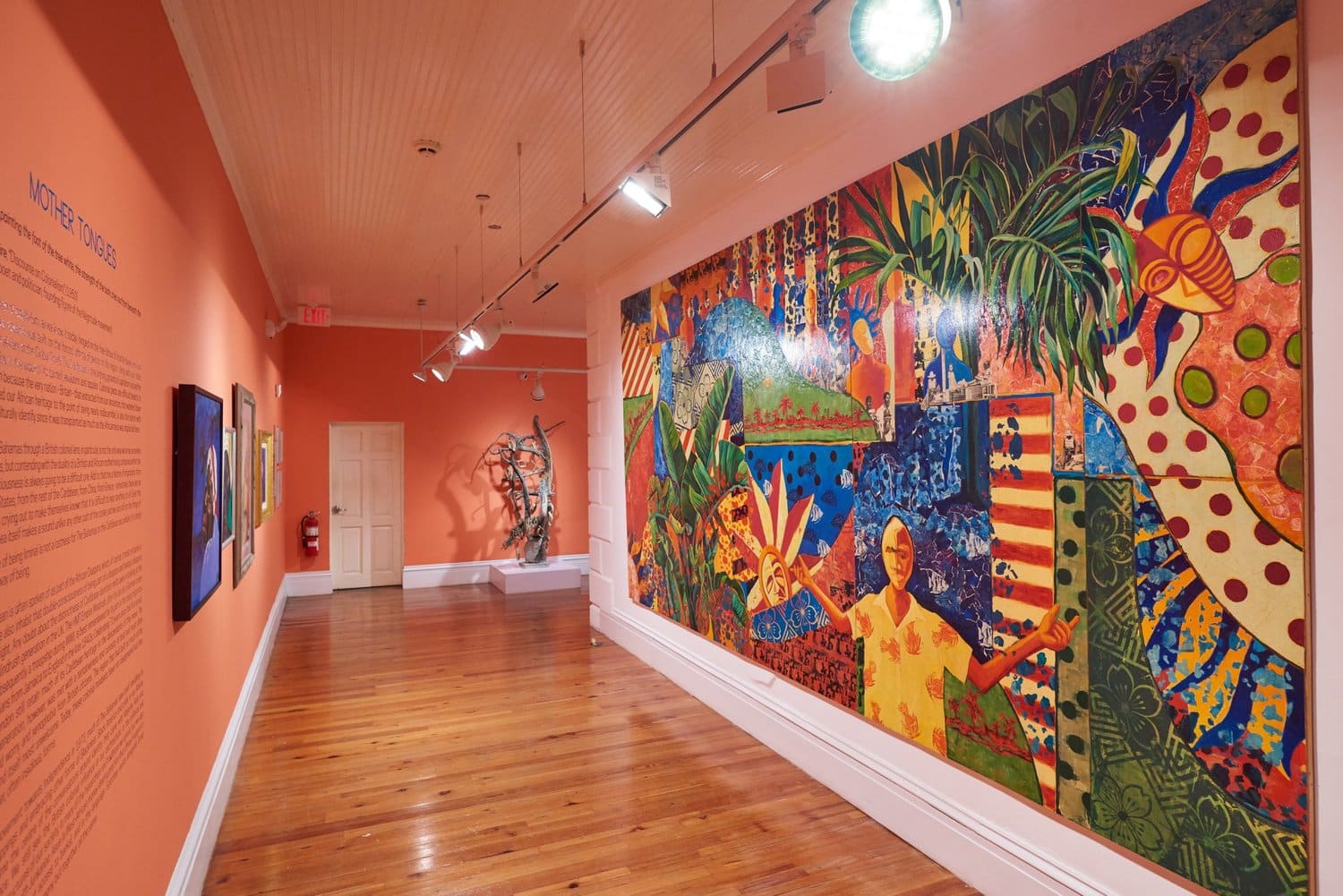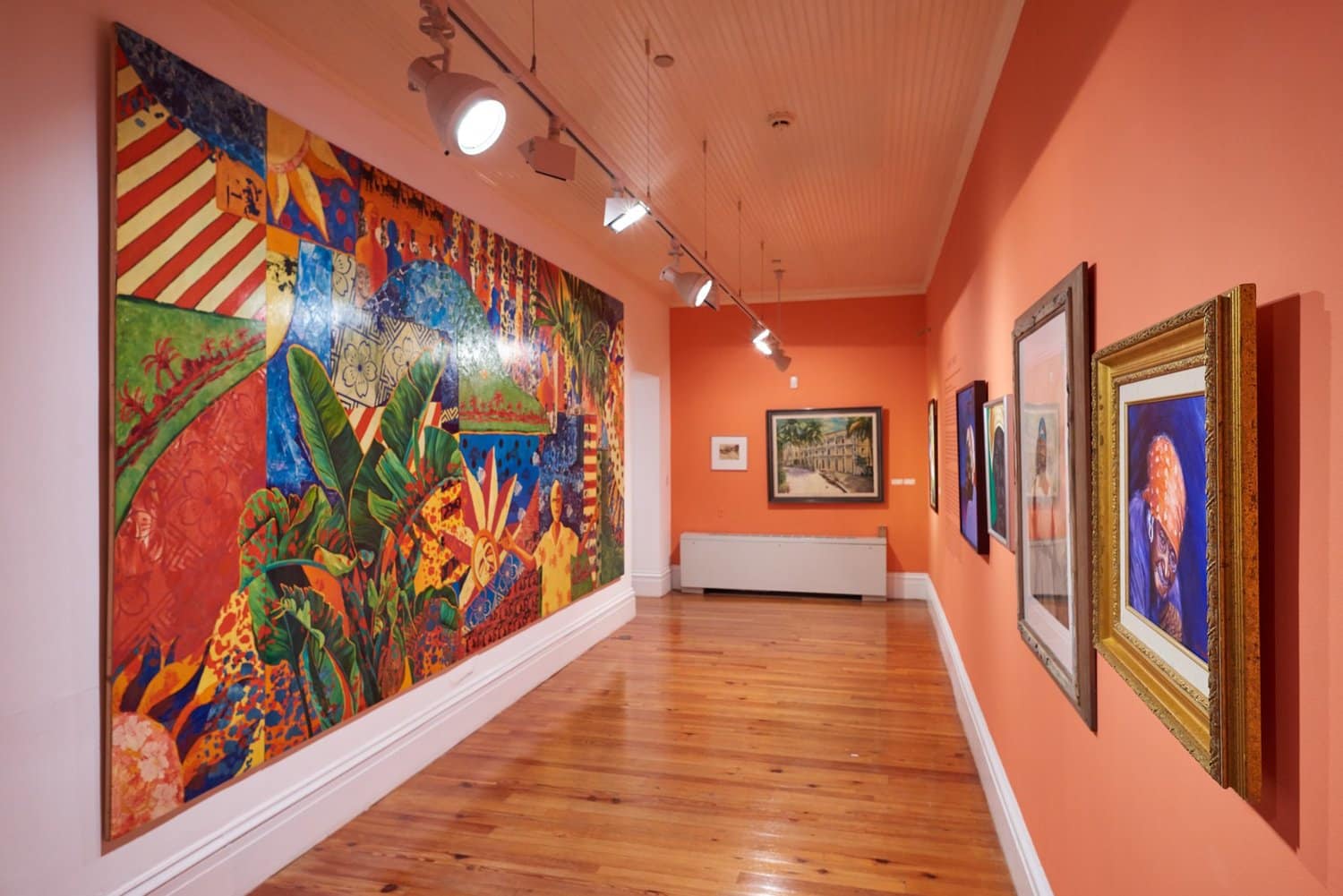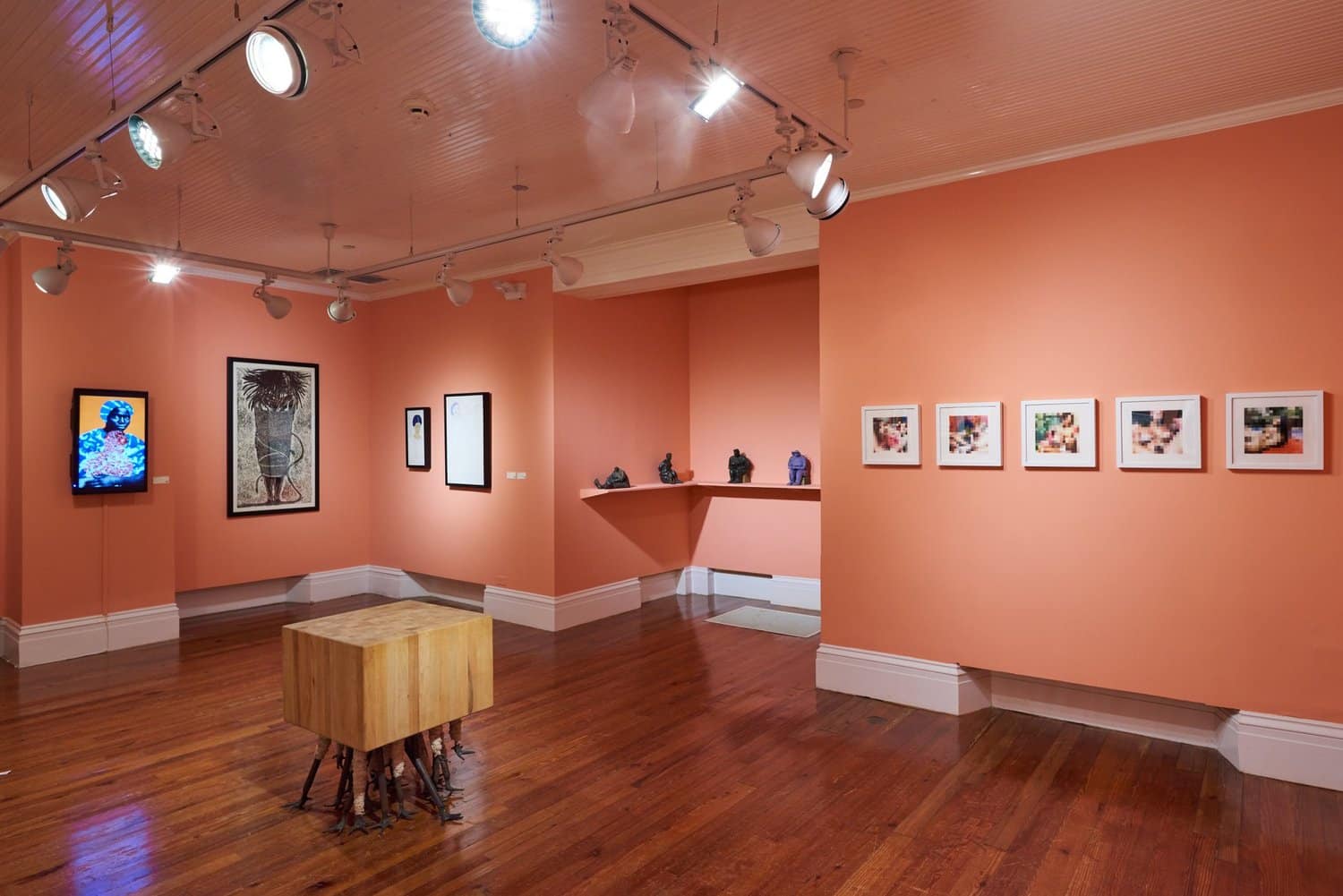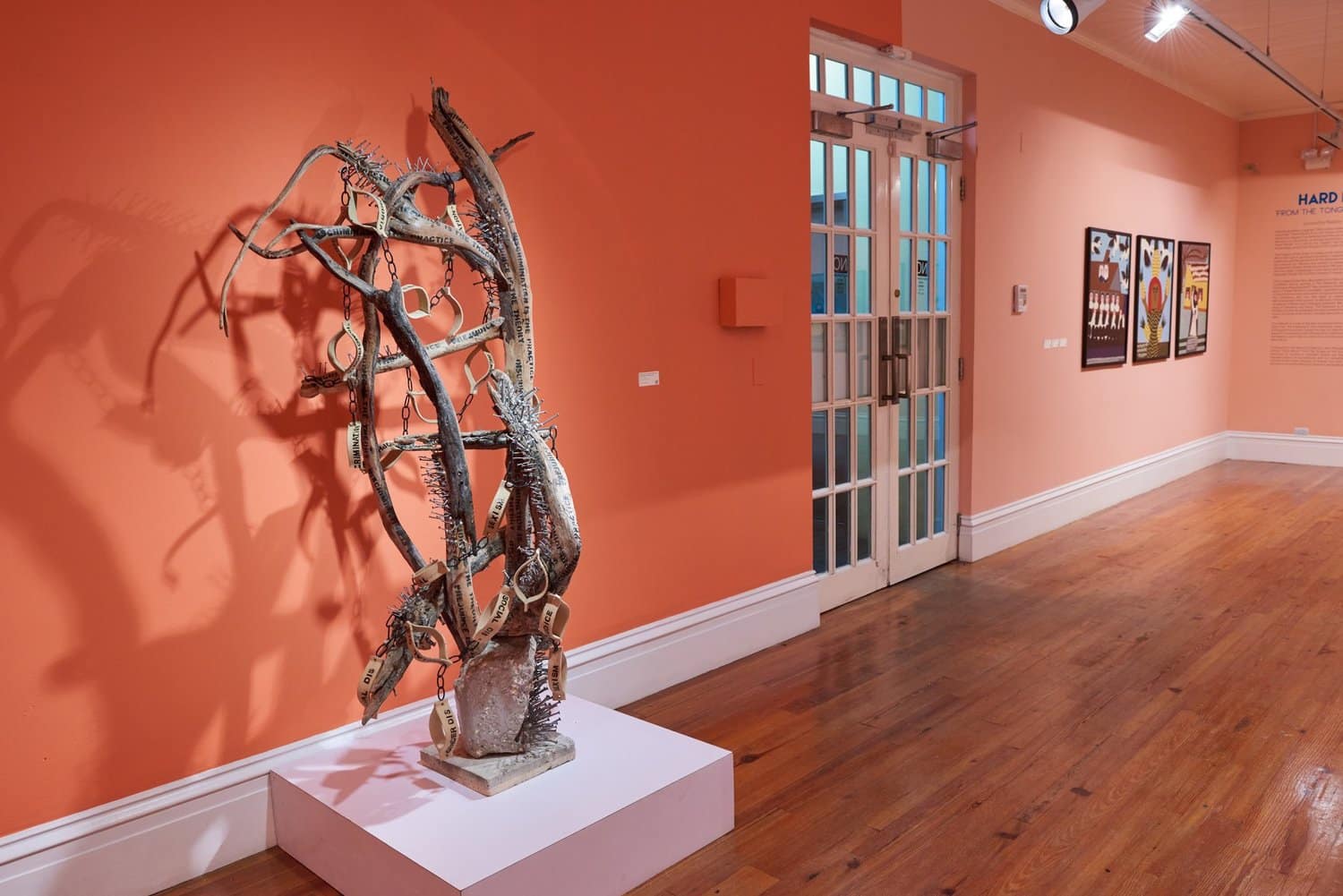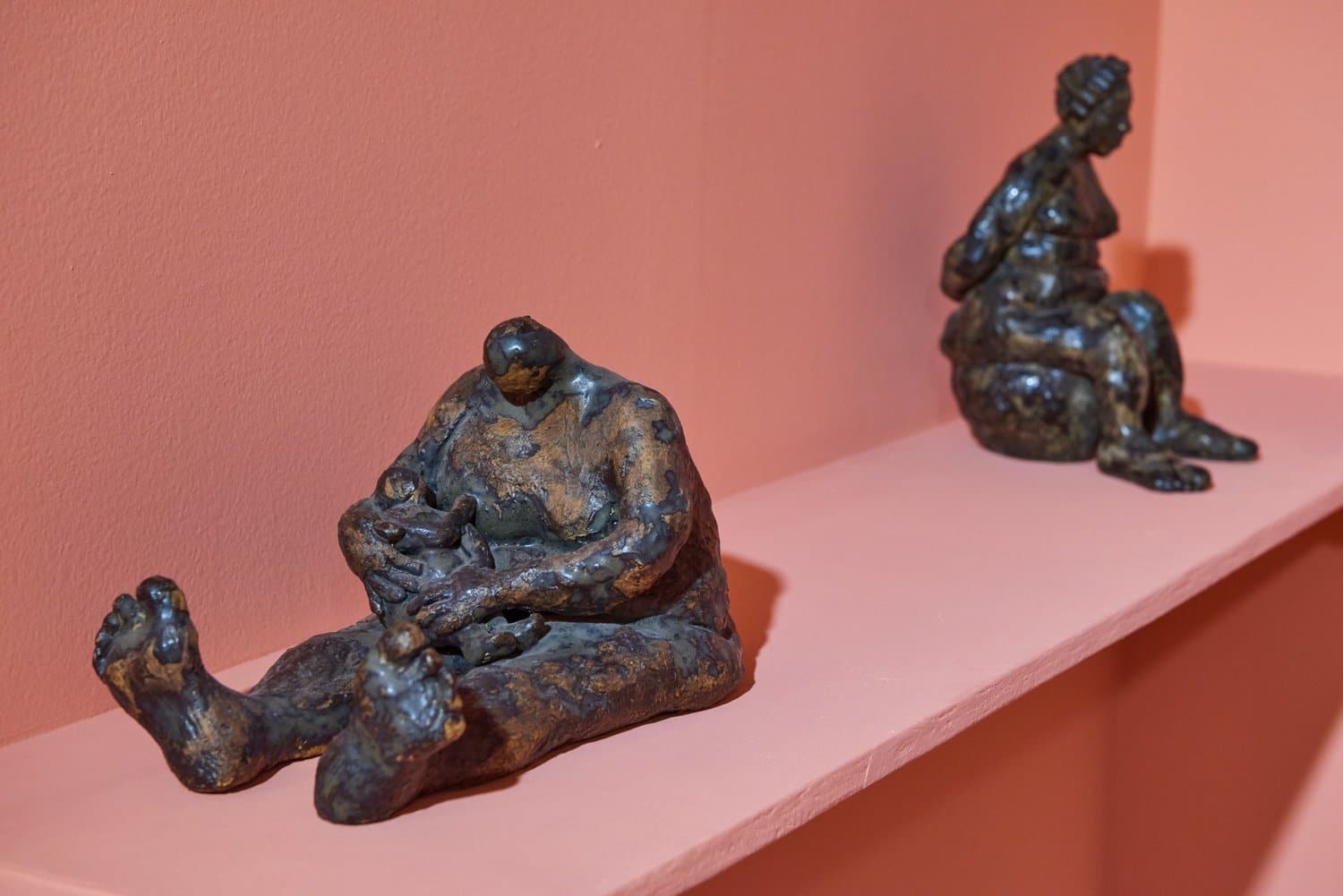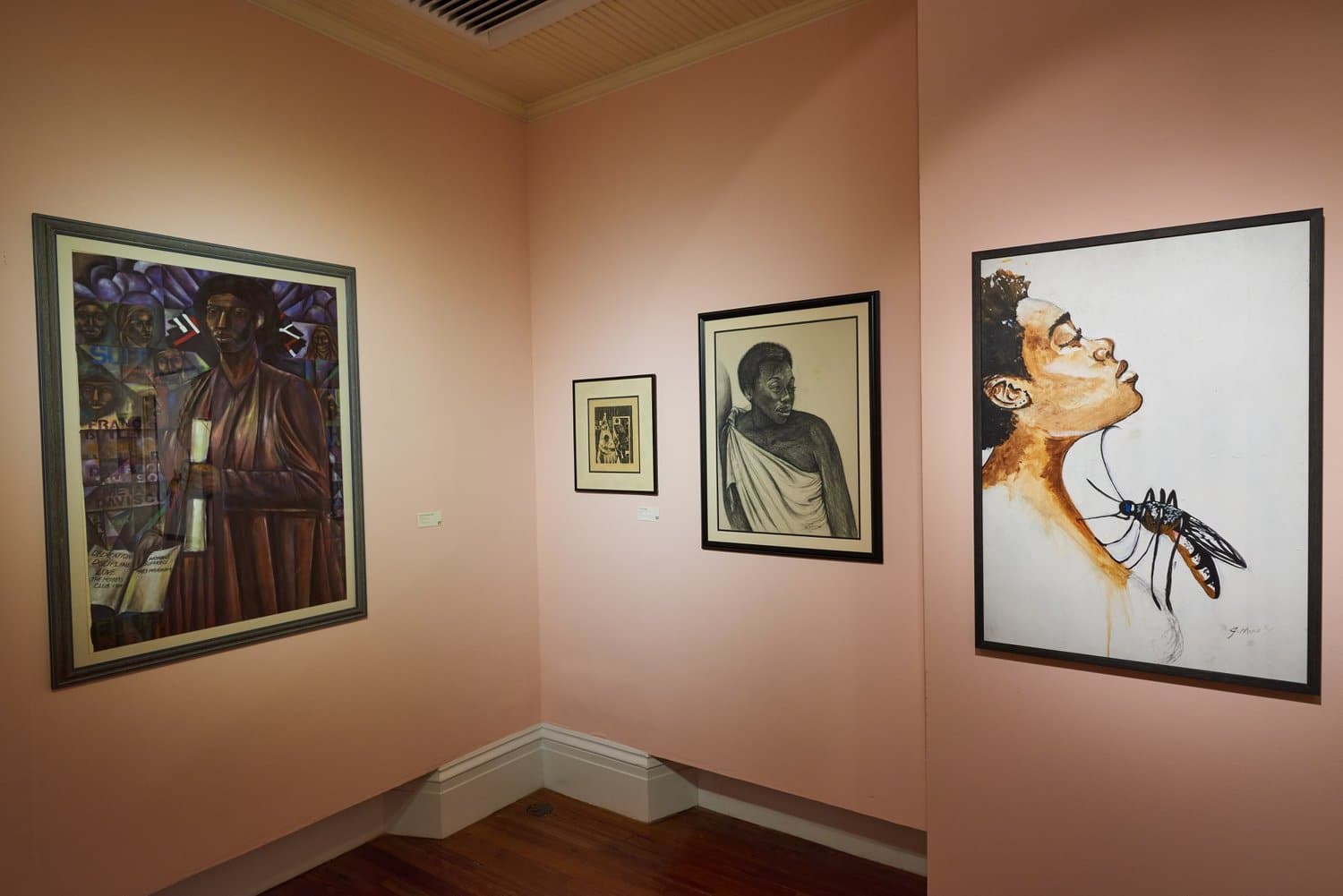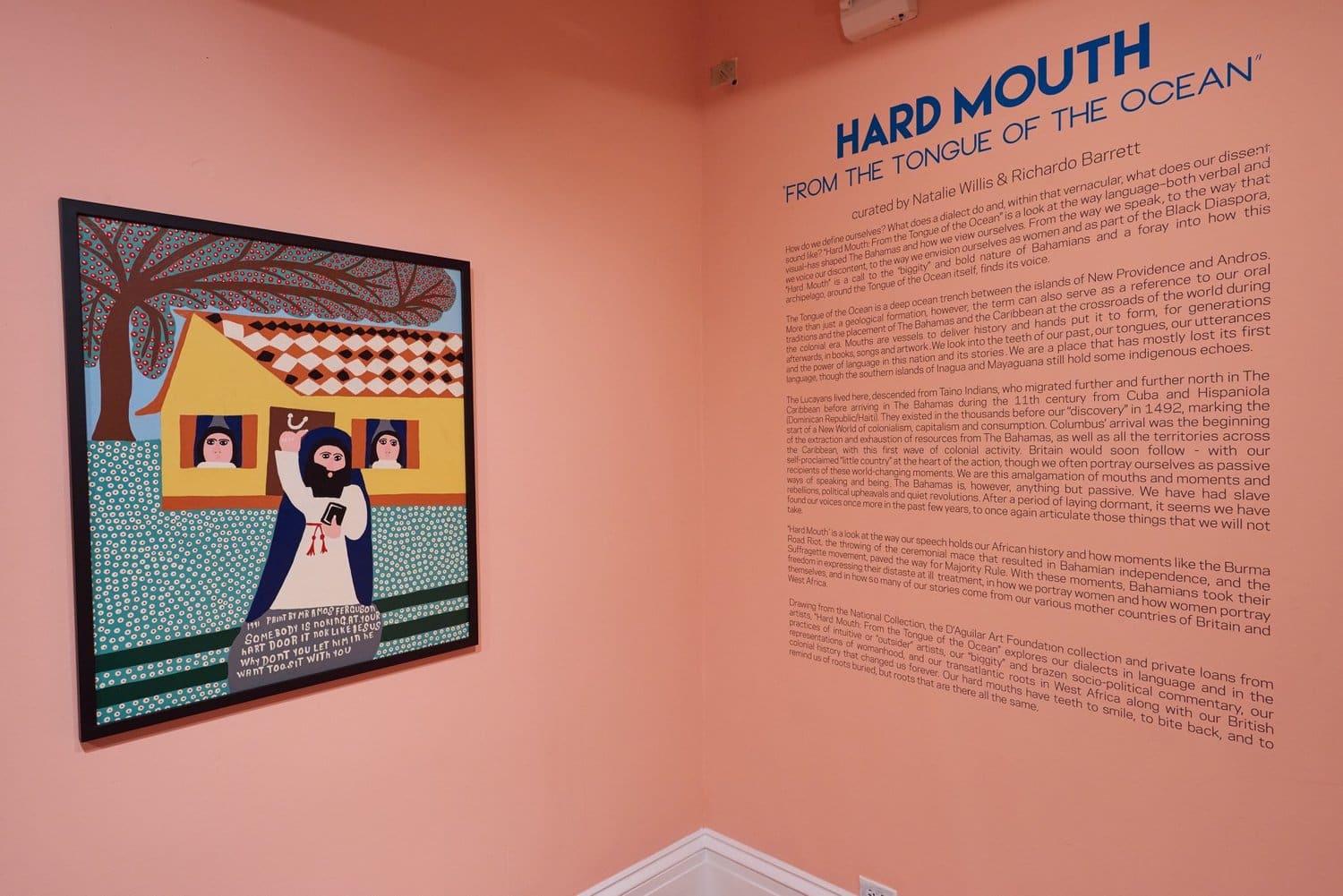EXHIBITION
Hard Mouth: From the Tongue of the Ocean
Friday, June 22, 2018
10:00 AM
Sunday, June 2, 2019
5:00 PM
Currently on view at The Current’s Gallery Space ECCO at Bahamar.

How do we define ourselves? What does a dialect do and, within that vernacular, what does our dissent sound like? “Hard Mouth: From the Tongue of the Ocean” is a look at the way language–both verbal and visual–has shaped The Bahamas and how we view ourselves. From the way we speak, to the way that we voice our discontent, to the way we envision ourselves as women and as part of the Black Diaspora, “Hard Mouth” is a call to the “biggity” and bold nature of Bahamians and a foray into how this archipelago, around the Tongue of the Ocean itself, finds its voice.
“Hard Mouth: From the Tongue of the Ocean” supports the work of 30 artists including: Joann Behagg, Sue Bennett-Williams, Dionne Benjamin-Smith, Margot Bethel, Coraline Binch, Carel Blain, Stan Burnside, Jackson Burnside III, Katrina Cartwright, June Collie, Jacob Frank Coonley, Kevin Cooper, John Cox, Eric Ellis, Sonia Farmer, Amos Ferguson, Tamika Galanis, Buster Hall, Kendal Hanna, Shan Kelly, Thierry Lamare, R. Brent Malone, Jodi Minnis, Holly Parotti, Khia Poitier, Antonius Roberts, James O. “Doc” Sands, Dave Smith, Maxwell Taylor, Joseph “Joe Monks” Weaver, Drew Weech and Tessa Whitehead.
The Tongue of the Ocean is a deep ocean trench between the islands of New Providence and Andros. More than just a geological formation, however, the term can also serve as a reference to our oral traditions and the placement of The Bahamas and the Caribbean at the crossroads of the world during the colonial era. Mouths are vessels to deliver history and hands put it to form, for generations afterwards, in books, songs and artwork. We look into the teeth of our past, our tongues, our utterances and the power of language in this nation and its stories. We are a place that has mostly lost its first language, though the southern islands of Inagua and Mayaguana still hold some echoes.
The Lucayans lived here, descended from Taino Indians, who migrated further and further north in The Caribbean before arriving in The Bahamas during the 11th century from Cuba and Hispaniola (Dominican Republic/Haiti). They existed in the thousands before our “discovery” in 1492, marking the start of a New World of colonialism, capitalism and consumption. Columbus’ arrival was the beginning of the extraction and exhaustion of resources from The Bahamas, as well as all the territories across the Caribbean, with this first wave of colonial activity. Britain would soon follow – with our self-proclaimed “little country” at the heart of the action, though we often portray ourselves as passive recipients of these world-changing moments. We are this amalgamation of mouths and moments and ways of speaking and being.
The Bahamas is, however, anything but passive. We have had slave rebellions, political upheavals and quiet revolutions. After a period of laying dormant, it seems we have found our voices once more in the past few years, to once again articulate those things that we will not take.
“Hard Mouth” is a look at the way our speech holds our African history and how moments like the Burma Road Riot, the throwing of the ceremonial mace that resulted in Bahamian independence, and the Suffragette movement, paved the way for Majority Rule. With these moments, Bahamians took their freedom in expressing their distaste at ill-treatment, in how we portray women and how women portray themselves, and in how so many of our stories come from our various mother countries of Britain and West Africa.
Drawing from the National Collection, the D’Aguilar Art Foundation collection and private loans from artists, “Hard Mouth: From the Tongue of the Ocean” explores our dialects in language and in the practices of intuitive or “outsider” artists, our “biggity” and brazen socio-political commentary, our representations of womanhood, and our transatlantic roots in West Africa with our British colonial history that changed us forever. Our hard mouths have teeth to smile, to bite back, and to remind us of roots buried, but roots that are there all the same.
